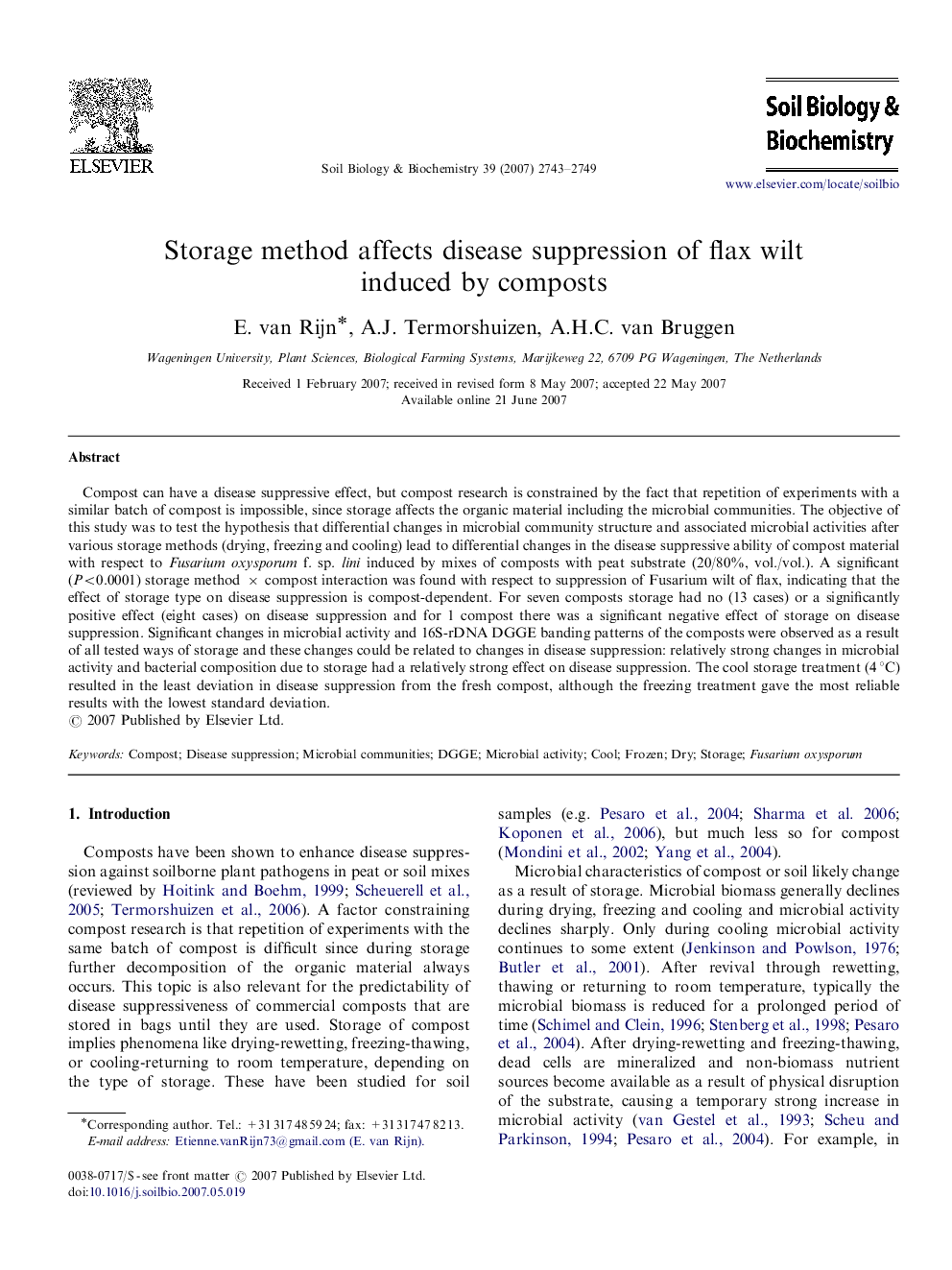| Article ID | Journal | Published Year | Pages | File Type |
|---|---|---|---|---|
| 2027022 | Soil Biology and Biochemistry | 2007 | 7 Pages |
Compost can have a disease suppressive effect, but compost research is constrained by the fact that repetition of experiments with a similar batch of compost is impossible, since storage affects the organic material including the microbial communities. The objective of this study was to test the hypothesis that differential changes in microbial community structure and associated microbial activities after various storage methods (drying, freezing and cooling) lead to differential changes in the disease suppressive ability of compost material with respect to Fusarium oxysporum f. sp. lini induced by mixes of composts with peat substrate (20/80%, vol./vol.). A significant (P<0.0001) storage method × compost interaction was found with respect to suppression of Fusarium wilt of flax, indicating that the effect of storage type on disease suppression is compost-dependent. For seven composts storage had no (13 cases) or a significantly positive effect (eight cases) on disease suppression and for 1 compost there was a significant negative effect of storage on disease suppression. Significant changes in microbial activity and 16S-rDNA DGGE banding patterns of the composts were observed as a result of all tested ways of storage and these changes could be related to changes in disease suppression: relatively strong changes in microbial activity and bacterial composition due to storage had a relatively strong effect on disease suppression. The cool storage treatment (4 °C) resulted in the least deviation in disease suppression from the fresh compost, although the freezing treatment gave the most reliable results with the lowest standard deviation.
